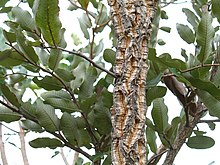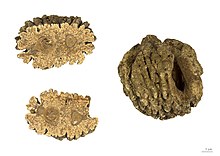
Abarema is a neotropical genus in the family Fabaceae. It is native to Brazil, Cuba, and Venezuela. Most of the species can be found in the Amazon Basin and the Guyana Highlands. They have a deep-green fernlike foliage, with bipinnately compound leaves.
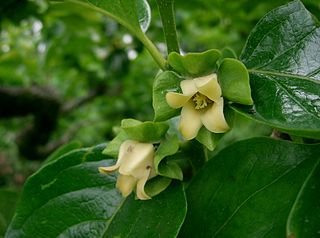
Diospyros is a genus of over 700 species of deciduous and evergreen trees and shrubs. The majority are native to the tropics, with only a few species extending into temperate regions. Individual species valued for their hard, heavy, dark timber, are commonly known as ebony trees, while others are valued for their fruit and known as persimmon trees. Some are useful as ornamentals and many are of local ecological importance. Species of this genus are generally dioecious, with separate male and female plants.

Endiandra is a genus of about 126 species of plants, mainly trees, in the laurel family Lauraceae. They are commonly called "walnut" despite not being related to the Northern Hemisphere walnuts which are in the family Juglandaceae.

Chrysobalanaceae is a family of flowering plants, consisting of trees and shrubs in 27 genera and about 700 species of pantropical distribution with a centre of diversity in the Amazon. Some of the species contain silica in their bodies for rigidity and so the mesophyll often has sclerenchymatous idioblasts. The widespread species Chrysobalanus icaco produces a plum-like fruit and the plant is commonly known as the coco plum.
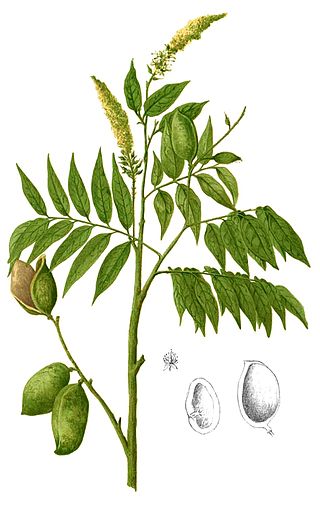
Crudia is a genus of plants in the family Fabaceae.
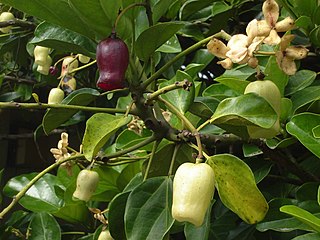
Atuna is a genus of plants in the family Chrysobalanaceae described as a genus in 1838. It is native to the Indian Subcontinent, Southeast Asia, and various islands of the western Pacific.

Maranthes is a genus of plant in the family Chrysobalanaceae described as a genus in 1825.
Parinari argenteo-sericea is a tree of Borneo in the family Chrysobalanaceae. The specific epithet argenteo-sericea is from the Latin meaning "silvery silky", referring to the pubescence of the inflorescence and flowers.

Renealmia is a plant genus in the family Zingiberaceae. Its members are native to tropical Africa and tropical America. In Peru, fruits and tubers are sources of indigenous dyes. and indigenous medical treatments for leishmania and malaria In Colombia, it is used to treat snakebite. Bracts and leaves can serve as phytotelmata, retaining small quantities of water that offer habitat for other organisms.

Dichapetalum is a genus in the plant family Dichapetalaceae. The plants are tropical lianas native mainly to tropical regions of Africa, Asia, Malesia, the West Indies, Australia and Latin America. Some species are known to be poisonous due to the presence of toxic fluorinated compounds such as fluorocarboxylic acid and dichapetalins, a unique class of cytotoxic compounds that are only found within this genus.
Parinari canarioides is a tree in the family Chrysobalanaceae. The specific epithet canarioides is for the species' resemblance to the genus Canarium.
Exellodendron is a genus of plant in the family Chrysobalanaceae described as a genus in 1972.
Angelesia is a genus of flowering plants belonging to the family Chrysobalanaceae.
Gaulettia is a genus of flowering plants belonging to the family Chrysobalanaceae.
Leptobalanus is a genus of flowering plants belonging to the family Chrysobalanaceae.
Microdesmia is a genus of flowering plants belonging to the family Chrysobalanaceae.
Moquilea is a genus of flowering plants belonging to the family Chrysobalanaceae.
Atuna excelsa is a species of flowering plant in the family Chrysobalanaceae, native to Thailand to the western Pacific.
